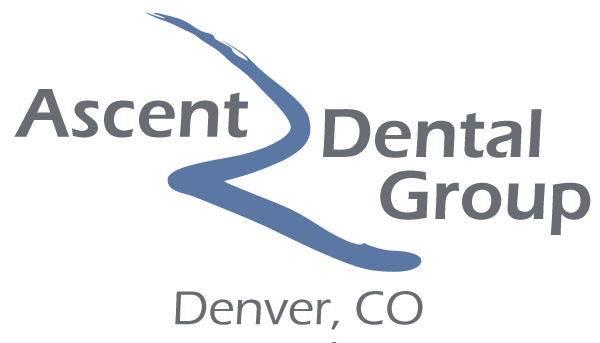Bone Grafting
If you’re considering dental procedures such as implants or are addressing bone loss issues, bone grafting in Denver may be an essential step to restoring your oral health. At Ascent Dental, we pride ourselves on offering advanced and compassionate care to ensure every patient feels confident and supported throughout their treatment. Led by Dr. Jeff Johnston, our team specializes in modern dental solutions like bone grafting, helping you achieve a strong, healthy smile.

What Is Bone Grafting?
Bone grafting is a dental procedure designed to rebuild and strengthen areas of your jawbone that have deteriorated due to factors like tooth loss, gum disease, or trauma. By adding bone material to weakened areas, bone grafting restores the foundation necessary for dental implants and helps maintain the integrity of your jawbone over time.
This bone material can be a small piece of your tissue, a biocompatible synthetic material, or donor tissue, depending on your specific needs. Over time, your body naturally integrates the new material into your existing bone, promoting growth and stability.
If you’ve been told you’re not a candidate for dental implants due to insufficient bone density, bone grafting may be the solution you need to move forward with restoring your smile.
Who Is a Good Candidate for Bone Grafting?
Dr. Johnston recommends bone grafting for patients facing bone loss or who are planning advanced restorative procedures. Here’s a closer look at who might benefit from bone grafting in Denver at Ascent Dental:
- Patients Considering Dental Implants: Dental implants require a stable and robust jawbone as a foundation. If bone loss has occurred in your jaw, a bone graft can create enough support to secure implants and ensure long-term success.
- Those with Periodontal Disease: Severe gum disease can lead to bone loss over time. Bone grafting helps restore the bone structure lost due to periodontal disease, improving both functionality and aesthetics.
- Patients with Facial Trauma or Injuries: Accidents or injuries impacting the jawbone can create structural issues. Bone grafting can repair these areas and restore balance to your facial structure.
- Individuals Facing Bone Resorption from Tooth Loss: When teeth are missing, the surrounding bone often deteriorates over time. Bone grafting prevents this resorption and lays the groundwork for a fully functional replacement, like a dental implant.
- Anyone Looking to Prevent Jawbone Shrinkage: Even if implants aren’t part of your plan, bone grafting can preserve bone levels, protecting the shape and structure of your face that may otherwise be affected by bone loss.
What Does the Bone Grafting Procedure Look Like?
At Ascent Dental, we prioritize patient comfort and use the latest techniques and technology to ensure effective, minimally invasive procedures. Here’s what you can expect during your bone grafting appointment:
Consultation and Imaging
Dr. Jeff Johnston begins by thoroughly assessing your oral health. Advanced imaging, such as X-rays or 3D scans, helps us evaluate the condition of your jawbone and decide the best approach for your graft.
Preparation
We will clean the area receiving the graft and prepare to ensure a safe and efficient implantation process. We may use local anesthesia to keep you comfortable, and additional sedation options are available if needed.
Application of Bone Material
We will apply the bone graft material to the targeted area. It will be carefully shaped to fit the defect and secured to promote proper integration with your natural bone.
Closure and healing
The gum tissue is sutured over the graft site to protect it as the healing process begins. The bone graft will integrate and stimulate new natural bone growth—a process that typically takes a few months.
Dr. Johnston and the team will explain each step in detail and address any concerns you may have to ensure you feel informed and confident about the procedure.
Caring for Yourself After Bone Grafting
After your bone grafting in Denver is complete, proper aftercare is essential for a smooth recovery. Below are tips to ensure your healing process goes as planned:
- Manage Discomfort: Some swelling and mild discomfort are normal after a bone graft. Over-the-counter pain relievers are usually sufficient. Cold compresses can also help reduce swelling during the first 48 hours.
- Stick to a Soft Diet: For the first few days, avoid foods that are hard, sticky, or difficult to chew. Opt for soft, nutrient-rich options like yogurt, soup, mashed potatoes, and smoothies.
- Keep the Area Clean: Maintaining oral hygiene is essential, but be gentle around the graft site. Use any prescribed antibacterial rinses and avoid brushing directly over the area until advised by Dr. Johnston.
- Follow All Post-Op Instructions: Every patient’s recovery is slightly different, and our team at Ascent Dental will provide you with personalized aftercare guidance, including timelines for follow-up visits. Be sure to attend all follow-ups so Dr. Johnston can monitor your progress.
- Avoid Smoking and Alcohol: Smoking and alcohol can significantly hinder the healing process. It’s essential to avoid these substances for at least a few weeks post-procedure.
By following these steps and closely collaborating with our team, you’ll set the stage for a successful recovery and a healthier, stronger smile.
Bone Grafting in Denver
Bone grafting is a highly effective solution for patients with bone loss. It can pave the way for successful restorative treatments like dental implants and ensure the long-term health of a smile. Contact us today to schedule your consultation and take the first step toward your dream smile.
